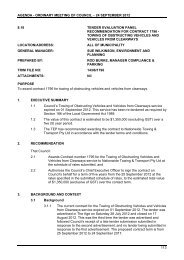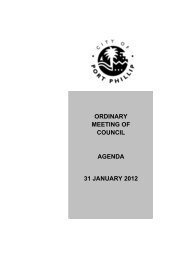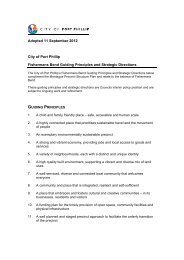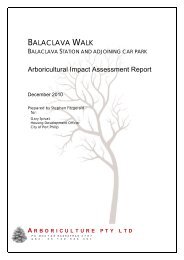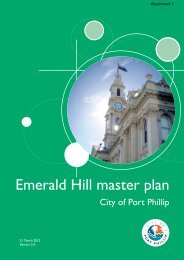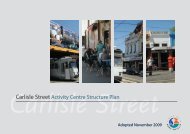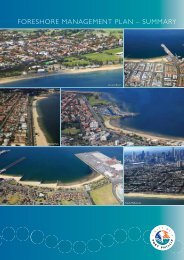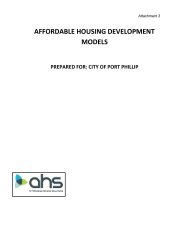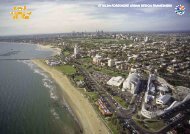Create successful ePaper yourself
Turn your PDF publications into a flip-book with our unique Google optimized e-Paper software.
Hamatak halirin 451<br />
the traditional marriage <strong>and</strong> other communal ceremonies. For people <strong>of</strong> Koba<br />
Lima in both West Timor (Loro Toba: loro = sun, toba = setting or sleeping) <strong>and</strong><br />
East Timor (Loro Sae: loro = sun, sae = rise), koba (along with tais or h<strong>and</strong>-woven<br />
textiles) play an important role in strengthening respectful <strong>and</strong> amicable relationships<br />
between individuals <strong>and</strong> between communities, <strong>and</strong> between the<br />
communities <strong>and</strong> the invisible spirits (deities, spirits <strong>of</strong> the ancestors, spirits<br />
<strong>of</strong> water, l<strong>and</strong>, <strong>and</strong> forests as well as mountains).<br />
Symbolically <strong>and</strong> historically, Koba Lima refers to a sacred geography<br />
involving a coalition <strong>of</strong> five Tetun speaking mountain kingdoms in the areas<br />
along the borders <strong>of</strong> East Timor <strong>and</strong> Indonesian West Timor. These kingdoms<br />
are Fatumea, Dakolo, Lookeu, Sisi <strong>and</strong> Mau Demu. Initially there was<br />
only the kingdom <strong>of</strong> Fatumea, then a coalition <strong>of</strong> three was formed by three<br />
brothers called Uma Tolu (uma = house, tolu = three) or Koba Tolu (but better<br />
known as Uma Tolu) consisting <strong>of</strong> Fatumea, Lookeu <strong>and</strong> Dakolo. 4 Sisi <strong>and</strong><br />
Mau Demu are wife-taking sacred houses (feto sawa) for Fatumea, Lookeu <strong>and</strong><br />
Dakolo who relate to each other as husar (literally connected by the umbilical<br />
cord) or maun-alin (older brother-younger brother). Fatumea, Lookeu <strong>and</strong><br />
Dakolo are wife-giving sacred houses (uma mane) for Sisi <strong>and</strong> Mau Demu. A<br />
political coalition <strong>of</strong> Koba Lima was then formed based on wife-giver/wifetaker<br />
marriage relationships. Unlike the clan sacred house (uma lulik) <strong>of</strong> the<br />
four other kingdoms, the sacred house <strong>of</strong> Fatumea has remained at the same<br />
place on top <strong>of</strong> a red rock (fatu = rock, mea or mean = red) from the beginning.<br />
This sacred house is called uma metan Fatumea (uma = house, metan = black)<br />
<strong>and</strong> uma kiik nakroma (uma = house, kiik = small, nakroma = bright).<br />
The sacred houses <strong>of</strong> the other kingdoms have been moved to different<br />
places due to wars <strong>and</strong> the colonial division <strong>of</strong> Timor. The sacred house <strong>of</strong><br />
Lookeu, for example, has been moved to five different locations. The first (the<br />
original) <strong>and</strong> the second ones are in <strong>Port</strong>uguese Timor or the present day<br />
East Timor (that is in Foho Lor Lookeu <strong>and</strong> in Hali Lulik, the origin <strong>of</strong> Hali<br />
Lulik in West Timor), the third, fourth, <strong>and</strong> the fifth are in West Timor (Wani<br />
Kroti, Au Ren <strong>and</strong> Batulu). But from time to time the people <strong>of</strong> Lookeu go to<br />
the site <strong>of</strong> the original sacred house in Foho Lor Lookeu for communal ceremonies.<br />
The largest kingdom in terms <strong>of</strong> the size <strong>of</strong> its l<strong>and</strong> <strong>and</strong> the number<br />
<strong>of</strong> its people is Lookeu, which consisted <strong>of</strong> territories ruled by nine dato (the<br />
nobles below liurai = king) before the colonial division <strong>of</strong> Timor. The second<br />
largest kingdom is Dakolo. When Timor was divided by the Dutch <strong>and</strong> the<br />
<strong>Port</strong>uguese in 1859 Fatumea, a half <strong>of</strong> Lookeu, <strong>and</strong> a half Dakolo remained<br />
4 Grijzen 1904; Pélissier 1996. In Grijzen (1904) Lookeu is spelled Lokeoe, while in Pélissier (1996)<br />
it is spelled Loquéo. We consider the correct spelling to be Lookeu. In Tetun Los, loo = settlement,<br />
Lookeu is an abbreviated version <strong>of</strong> ‘Lookakeu’ meaning ‘settlement <strong>of</strong> pine trees’. Other nearby<br />
places are called Lo<strong>of</strong>oun (‘new settlement’), Loonuna (or Loonunak = ‘settlement <strong>of</strong> the nunak<br />
tree’), Lo<strong>of</strong>ehan (‘settlement <strong>of</strong> the flat l<strong>and</strong>’) <strong>and</strong> Lootebok (‘settlement <strong>of</strong> the wooden plate’).



